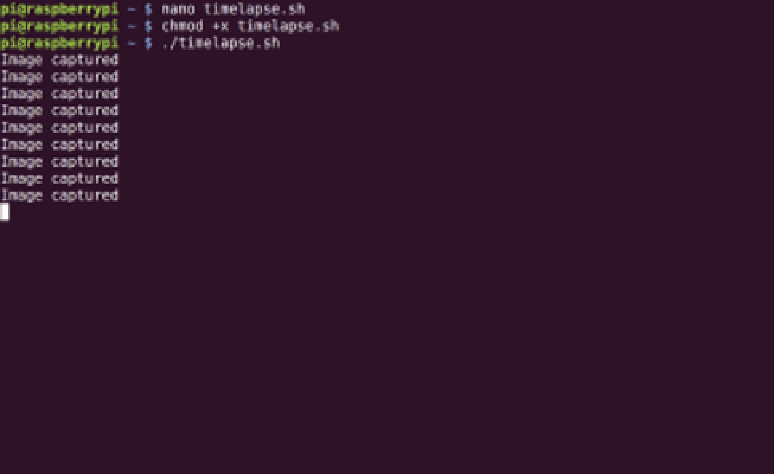Hardware Reference
In-Depth Information
Figure 15-10:
he
timelapse.
sh script,
running on a
Raspberry Pi
Model B
Time-lapse photography is often used to compress a long or complex task into an entertain-
ing video. Commercial time-lapse photography rigs, which can be extremely expensive, are
often used to film the growth of plants, the construction or buildings or the flow of traffic. A
Raspberry Pi running this script can do all of these things, but at a fraction of the cost.
The images you've captured can be transformed into a video, either using video editing soft-
ware or the
ffmpeg
tool. While
ffmpeg
can be run on the Raspberry Pi itself, it's a resource-
hungry program that will take a considerable time to run if you have a large number of
high-resolution images to convert. If you have the patience do the conversion on the Pi itself,
install
ffmpeg
with the following command:
sudo apt-get install ffmpeg
Then convert the images by typing:
ffmpeg -r 1 -i *.jpg timelapse.mp4
This will create a video with images showing at a rate of one per second, or 30 times faster
than real-time, from all JPEG images found in the current directory. To speed the video up
still further, you can adjust the
-r
option:
-r 10
will show 10 images per second,
-r 20
20
images per second and so forth. The finished video can then be shared directly, or uploaded
to a video streaming site like YouTube or Vimeo.

